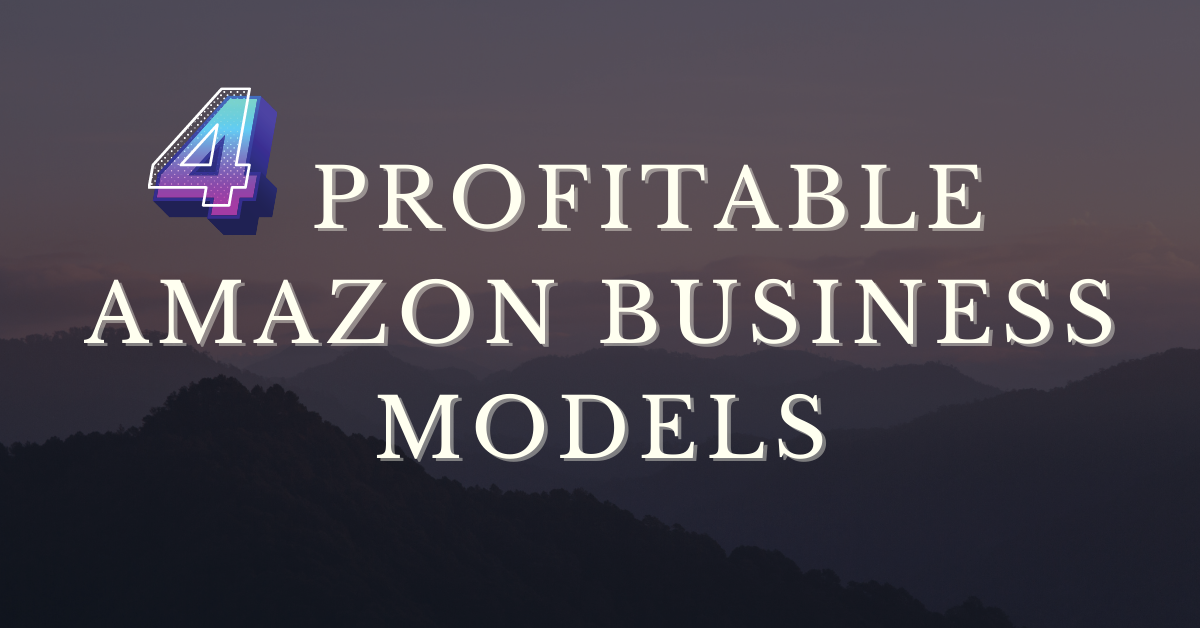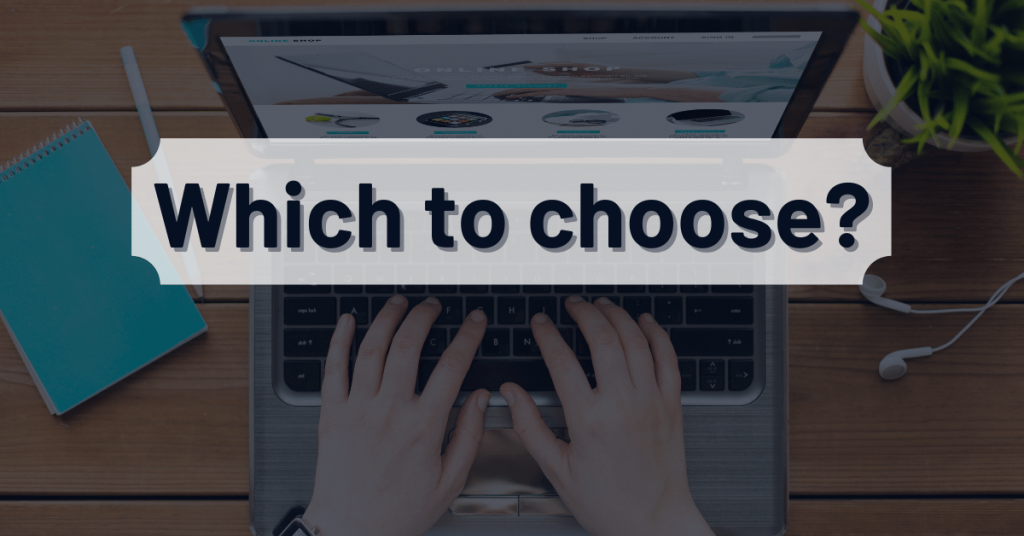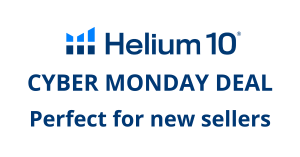4 Profitable Amazon Business Models

Starting an online business is a big decision, and when it requires you to put up your hard-earned money, it isn’t one that should be taken lightly. Before you begin, you should have an understanding of what you want to get out of your business, and how much money you are willing to risk.
I say risk because nothing in business is certain – there’s always the possibility that a business will fail and cost you everything you put into it. The key is to take calculated risks to limit those potential losses.
There’s no one “right” way to sell products on Amazon. In fact, there are a number of different Amazon business models to choose from depending on your objective and your budget.
This article will discuss some of the more popular business models people use to sell on Amazon, and hopefully it will help you make a more informed decision as to which business model you should pursue.
When someone tells you they have an Amazon FBA business, odds are good they are referring to a private label business. It is the most commonly taught of the Amazon business models.
The high-level overview of a private label business is to take a product that already exists, apply your brand to it, and sell it as your own.
A great thing about running a private label business on Amazon is all the data and metrics you can use to improve your odds of success.
As is true with any retail business model, product selection is critical. Choosing a product that nobody actually wants to buy will leave you with a bunch of unsold inventory. Alternatively, jumping into a market that is over saturated will mean you may need to drop your price to razor thin margins to compete with everyone else.
When selling on Amazon, you can gauge metrics such as demand and competition using tools like Helium 10. These tools can show you the sales and search data estimates from Amazon to give you a clearer picture of how a product is performing. This information can then be used to determine if it is the right product for you to sell!
This will allow you to identify a product that already has proven sales and that isn’t already being dominated by a sea of competitors.
Once you find a product with potential, Amazon sellers usually look for a manufacturer on Alibaba, where one can find a supplier for nearly any product.
Once you negotiate an order with a manufacturer and have your brand applied to it, you would then have the product sent to an Amazon warehouse. The product would then be available for purchase through the Amazon marketplace.
The private label model can certainly require more upfront capital than other Amazon business models, but it also allows you the most control and flexibility. You can customize your product to cater to what you believe the needs of the consumers are. You also have the ability to build a brand that you can expand beyond Amazon, should you choose.
Retail/Online Arbitrage
Some new sellers aren’t comfortable investing the capital required to start a private label business right away, so they may opt to start with retail or online arbitrage.
Each of these options involves finding one or multiple products that is heavily discounted from a retailer, and then reselling them on Amazon.
You would ship these products into Amazon and sell them under an existing listing for a price that will result in a profit for you.
The difference between Retail arbitrage and Online Arbitrage is simply where you end up sourcing the products. If you were to go to Wal-Mart and buy them out of a particular puzzle to resell on Amazon, that would be retail arbitrage. Alternatively, if you order the items online, that would be considered Online Arbitrage.

The major benefits of the arbitrage business model are that it doesn’t require nearly as much capital to get started, and you don’t need to build a listing or run any kind of promotions. You will be leveraging Amazon’s traffic and selling from an established listing.
The major downside to retail/online arbitrage is that it isn’t sustainable at scale. You will constantly be on the hunt for deals so that you have inventory to sell. There is only so much you can do in a day, and at some point you will plateau.
This business model can be very time consuming as you scour for bargains. However, it can be a great way to raise some capital if your goal is to venture into one of the other business models discussed in this article.
Wholesale
Wholesale works much in the same way as arbitrage except that you won’t be searching retailers for a deal. Instead, you will be working directly with a manufacturer who will sell you their goods for a wholesale price.
You would come to an agreement with a manufacturer who would sell a specified quantity of their product for a discounted price. You would then send that inventory into Amazon and sell it on an existing listing for a profit.
You might think “This sounds much easier than arbitrage – why doesn’t everyone just do this?”
Well wholesale has its pros and cons as well.
The major benefit is that you don’t have to wonder where your next stock of inventory will come from. You can always order more products from the manufacturer, and as your business grows, you can order even more units, hopefully for a lower price.

The biggest downside is the competition. When multiple people are selling the same product on Amazon, their objective is to “own the Buy Box”. Having the Buy Box means when someone clicks the “Add to Cart” button, they are ordering from YOU instead of one of your competitors.
A few factors that go into acquiring the Buy Box are:
- Offering Prime Shipping
- Having the best price
- Having good seller feedback
So right off the bat, if you intend to ship these items out from your garage, you won’t have the Buy Box, and this would greatly affect how many orders you receive (even if you have the best price on the listing).
The next factor of having the best price is where things get a bit more complicated. Each seller wants to set the price at a point where they are the best offer on the listing while still making a profit for themselves. One of the keys to being able to offer the best price is to get the best deal from the manufacturer.
Typically when you order larger quantities of inventory, the price per unit goes down. So, if you are able to buy more than your competitors, you will likely be able to offer a cheaper price on Amazon. The problem is that this drives up your costs overall. If you don’t have deep pockets to buy excessive quantities, you may not be able to compete against the other sellers on the listing.
To be successful with wholesale, you will need to find a product that doesn’t have much competition, and you will need to strike a deal with the manufacturer to get a good enough price that you can compete on the listing. This is no simple task, but if you can find the right opportunity, it can be quite profitable.
Dropshipping
Dropshipping is in a league of its own when compared to the other Amazon business models discussed in this article. While each of the business models above require you to send inventory into Amazon, dropshipping doesn’t have you handle any inventory at all.
The way dropshipping works is you first find a supplier or manufacturer who can fulfill orders of a particular product one at a time. You then list that product on Amazon as a Fulfilled-By-Merchant (FBM) offer. This tells Amazon that you will be fulfilling the orders yourself.
Once a customer places an order for your product, you then take their shipping information and place an order with your supplier, giving them your customer’s information. The supplier then sends the product to your customer.

Of the Amazon business models discussed in this article, dropshipping certainly requires the smallest up-front investment. Since you only order the items once a customer makes a purchase, you’re never out of pocket for inventory. And since the supplier will be shipping the orders directly to your customers, you never need to handle the inventory either.
“Wouldn’t that make dropshipping the best Amazon business model?”
I suppose that’s a matter of opinion, but my opinion is “no”.
Firstly, since this business model doesn’t used the FBA network, your customer orders won’t be eligible for Prime shipping. This doesn’t necessarily mean that your customers will need to wait a long time for their products, but more importantly it doesn’t guarantee short delivery times (which is what many shoppers want).
If your supplier is sending your products from overseas, be prepared to get some customer complaints about waiting several weeks to receive their orders.
Another downside to dropshipping is there is no stopping anyone else from competing with you. All someone else needs to do is find out where you source your products, and they can jump on the same listing you are.
At least with wholesale, you can have the advantage of getting a better deal with the manufacturer than your competitors, but with dropshipping, there is much less wiggle room.
If you find a good dropshipping product, it may be a winner for a while, but as others find your success, be prepared for competition to ramp up.

Which of the Amazon business models is best?
All of the Amazon business models discussed above are viable and have the potential to be profitable. The decision comes down to which is the best fit for you, your goals, your budget, and your business.
If you were to ask me to pick one, I would absolutely have to recommend the private label business model.
Private label allows your to create your own product offering and create a brand that you can be proud of and stand behind. If your product takes off, you can expand your business to other platforms or perhaps even take it offline.
Keep in mind that private label does take more money to get going, but if you’ve got the capital, it could be worth it!






